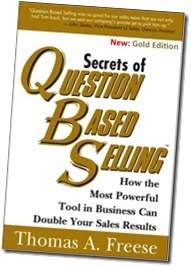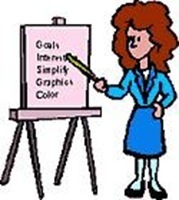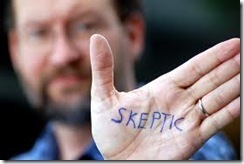Thomas A. Freese's Blog, page 14
May 7, 2013
The “New” Question Based Selling
“If you want to challenge the customer’s thinking about a product or service, you might first want to challenge your own on how it’s being positioned.” T. Freese
My first book was originally published in May of 1999, fourteen years ago this month—so this is a milestone anniversary of sorts. I have since published three additional sales books and  a parenting book,along with countless articles,all of which have evolved into the Question Based Selling Methodology. Literally thousands of salespeople and hundreds of sales teams have been trained on the QBS Methodology, which continues to evolve and grow.
a parenting book,along with countless articles,all of which have evolved into the Question Based Selling Methodology. Literally thousands of salespeople and hundreds of sales teams have been trained on the QBS Methodology, which continues to evolve and grow.
During this time, my first book (Secrets of Question Based Selling) has done exceedingly well, and become my publisher’s number one bestselling business book with multiple runs over the years. It also has the distinction of having outsold itself every six months for the past thirteen and a half years…and counting.
You never know until a book is actually released whether it’s going to hit the nail on the head, but my intentions with this first book were clear from the beginning. I wanted to publish a timeless work where issues like the salesperson’s need to gain credibility, pique the customer’s interest, and convey value were strategic concepts that would never go out of vogue. So, it’s no surprise to me that these concepts are just as important to the success of a salesperson now as they were when the ink was fresh in 1999.
That said, I am happy to report that I have spent the last ten months updating this book for re-release in the fall of 2013, entitled Secrets of Question Based Selling: Gold Edition. Essentially, I have taken the proven strategies of QBS and adapted the material to the current competitive environment. I have also added a new layer of anecdotes, examples and content to with that I believe pulls the QBS Methodology together into a tighter and even easier to implement package.
With a target release date of November 2013, we are hopefully on track to extend the relevance and longevity of ‘QBS’ for another 14 years. Thank you for your continued support and encouragement on this truly unique journey.More information about the book will be forthcoming as the release date nears.
March 19, 2013
Make Pipeline Generation a Self-Fulfilling Prophecy
Generating leads and filling the pipeline is a challenge that every salesperson faces. Soon after you close all the deals that were on your forecast, there had better be some business waiting in the wings if you want to have another successful quarter. And, if there isn’t a host of revenue automatically rolling in, then you need to find a way to regenerate your pipeline, and fast.
For years, cold-calling has been the chosen prescription offered by sales trainers and managers alike. Simply pick up the phone and start ‘smiling’ and ‘dialing’ until you find someone who might be interested in your product or service. Sales is a numbers game, a cold-calling advocate would argue, saying, “If you want to increase the size of your forecast, simply make more calls.” 
While I do agree that salespeople need to initiate contact with some number of potential customers in order to create activity that will ultimately fill the forecast, I disagree completely with the notion of cold-calling.
To me, cold-calling is a huge waste of time. People hate to make cold calls and they don’t want to be on the receiving end, either. There’s a reason that most sellers have elected to be on the ‘do not call’ list—it’s so they won’t be bothered at home or during dinner by cold-callers. The net result of cold-calling is that a lot of effort gets expended, and after having incurred tremendous rejection, the sales funnel is still anemic. Anyone else ever experience these feelings of hopeless futility?
This is one of the many places where Question Based Selling diverges from traditional approaches. To me, there is a big difference between having a solid pipeline and what one could instead be characterized as a pipedream.
“But Tom, how am I supposed to fill my pipeline without making cold calls?” Ahhh, grasshopper, that’s where “Turning Cold Calls into Lukewarm Calls” (Chapter 12 of my first book, “Secrets of Question Based Selling) becomes the sharpened skill of a gifted salesperson. The technique is simply to make yourself sound more purposeful, relevant, credible, and valuable. How exactly does one do that? That depends on your situation because the context from one call to the next can be very different. But, the strategy of sounding more purposeful, relevant, credible, and more valuable remains consistent.
Let me give you some examples to solidify the point. If I came to work for your company, I might try to meet with one of your top product managers. During that meeting I would ask them, “What are five or six topics you think we should be talking with customers about?” Of course, they would gladly fill my cup with talking points, which would then allow me to easily make this call.
“Hello, Mr. Prospect, my name is Tom Freese of ABC Company and I’m on the team that works with manufacturing accounts in Southern California. I had a meeting with one of our product managers last Thursday just after lunch, and he brought up a handful of issues, two of which I thought might directly impact your manufacturing platform, one of which is time sensitive.” At this point I can either ask for a call back if I’m leaving a voice-mail or ask if I caught them at a bad time of they answered the phone live.
After a relevant and purposeful conversation with that prospect, it would be easy for me to pick up the phone and call another one saying, “I just got off the phone with one of your colleagues in another account and two issues came up that raised a flag and might also impact your business as well. Did I catch you at a bad time?”
I say, if you’re calling for no reason whatsoever, then my feeling is that you shouldn’t bother calling. But if you are calling for a purposeful, relevant, credible business reason, then you might as well make it sound like that if you want to be perceived as valuable. Of course, the more conversations you have with prospective customers, the more reasons you have to follow up with their “colleagues” in other accounts. Likewise, the more internal conversations you have with key people within your own company, the more fodder you gain for initiating contact with other potential buyers.
Put it this way, I don’t network just to meet new people. The real skill in networking is leveraging your contacts in an appropriate and purposeful way, such that the next person you contact appreciates that you thought about them and are calling to help in some way. At that point, making those initial sales calls creates more opportunity, and filling the pipeline becomes a self-fulfilling prophecy. Let me say it like this. When was the last time you got “thanked” for making a prospect call?
February 3, 2013
The “Super Bowl” of Selling
The “Super Bowl” of Selling…
I started writing this article on Sunday afternoon, just a few short hours before heading off to a Super Bowl party. This year, the featured teams were the Baltimore Ravens versus the San Francisco Forty-Niners. The question on everyone’s mind was, who’s going to win the game?
This year, there was no clear villain or “golden boy” that defined the teams. In fact, if anything there was a virtual tie in terms of who was most likely to win the game. Couple that with the fact that the coaches for the opposing teams were not only close friends, they were brothers. If you were the parents, who would you root for? While there are always likely to be some die-hard fans of one team of the other, basically it was a dead heat going into the most important game of the season. 
Too often, this situation is exactly what happens in sales. You get to the end of the decision cycle after a long hard-fought competitive sale, and the customer concludes that both vendors are indeed viable and either could do the job. Now your success in winning or losing the sale almost comes down to chance—a coin flip.
Me, I don’t want to have a 50/50 chance of winning. If anything, I would like to have an edge. In fact, if it were completely up to me, I would like to have an unfair advantage going into the final outcome of the sale. My product has been deemed as viable, but so has theirs. Let’s assume there’s no product advantage. Both companies are deemed to be financially strong with long lists of client references, so there’s no advantage there either. Therefore, the difference maker that’s going to produce an unfair advantage has to come from me—essentially, the way the game gets played.
This year’s super bowl could have gone either way, but one thing’s for sure. At the end of the day, there will only be one champion.
This is the challenge salespeople face almost every day. How can you have a competitive advantage, not just from your product or company, but from the way the sales process is executed?
I sat down with one of my client’s VP of Sales the other day and we talked about the fact that sales continues to be the least talked about profession in the world. Amazingly enough, sales drives every company, but winning or losing is often left to chance—the experience of the individual salesperson versus the experience of your closest competitors. Once again, it’s a virtual coin flip. Is that the way you would choose to manage your company’s success, or your own?
Stay tuned for how to give yourself an unfair competitive advantage after I watch the game tonight.
–Thomas A. Freese
January 2, 2013
Re-Engineering the Elevator Pitch
Companies spend millions of dollars trying to craft next generation messages to “arm” their respective sales forces with a more impactful elevator pitch. Then they hire me—and when I show up, I tell clients that starting with an elevator pitch puts the salesperson or entire sales team in an extremely weak position.
The phrase “elevator pitch” is a colloquialism that characterizes the initial statements salespeople often use to open their conversations with prospective customers. The reference comes from the visual one would get if you suddenly found yourself in an elevator with the key decision-maker at one of your important prospect accounts. As soon as the decision ![elevator-pitch[1]](https://i.gr-assets.com/images/S/compressed.photo.goodreads.com/hostedimages/1382952010i/6296858.png) maker pushes the button for the 12th floor, you essentially have a small window of time in which to say something that would hopefully be impactful enough to get the prospect’s attention. This situation occurs at the beginning of every sales call as well. Knowing that prospects are quick to form impressions, salespeople feel a similar pressure to say something impactful that will grab and hold the prospect’s attention.
maker pushes the button for the 12th floor, you essentially have a small window of time in which to say something that would hopefully be impactful enough to get the prospect’s attention. This situation occurs at the beginning of every sales call as well. Knowing that prospects are quick to form impressions, salespeople feel a similar pressure to say something impactful that will grab and hold the prospect’s attention.
Starting your sales calls or presentations with a brief elevator pitch is problematic, because it is the quickest way to commoditize your value. Why? Well, let’s first ask: What issues are important to your customers? Reliability? Quality? Time to market? Cost effectiveness? Now, let’s ask: What percentage of prospects are likely to form an impression of the salesperson as they first engage? The answer is 100%. Literally everyone you talk with will start forming their impressions from the very beginning of your interactions with them. The question is, what impression(s) do you want prospects and customers to form about you?
When I respond to sales training requests, I figure that most Sales VP’s have already experienced plenty of training programs over the years—some good, and others not so much. Thus, it’s safe to assume that whatever I say about the QBS methodology will likely be compared to whatever impressions they have formed as a result of their previous sales training experiences. Knowing this, I definitely don’t want to start spewing buzzwords that will make me sound like the rest of the sales training establishment.
The standard elevator pitch for QBS might sound like this. Take a moment to digest and form your own impression.
Example of What Not to Do: Sample Elevator Pitch for Sales Training
“After 17 years in the trenches of corporate sales and management, I developed a high-end sales methodology called Question Based Selling and I now teach salespeople how to be more effective in penetrating new accounts. I help people uncover needs, increase the buyer’s sense of urgency, build internal champions, shorten the sales process, increase the size of their sales forecasts, close more deals, handle objections, increase margins, maintain market share, be proactive versus reactive …blah, …blah, …blah, …blah.”
Isn’t this what every sales trainer says about their program? It absolutely is! Everyone who offers sales training talks about pipeline generation, penetrating new accounts, handling objections, and closing sales. And you can be sure they all make similar claims of superiority that sales executives have heard many times before. Consequently, when prospects hear the same old pitch, they tend to form the impression that, “Hey, this person sounds just like everyone else.”
If the company you represent sells high value products or services, you don’t want to sound the same as everyone else. Instead, you want to differentiate your solutions, your company, and most importantly, yourself, causing prospects to form the impression that,“Hey, this person sounds very different (and potentially more valuable) than everyone else!”
Let’s me ask you, what do you suppose is more important to the typical customer when you first engage—their problems or a sales pitch? From my vantage point, it’s clear that the vast majority of customers are much more focused on their own problems, issues and concerns. Thus, it no longer makes sense for a customer-focused salesperson to open his or her presentation with a data dump of product information, rather than focusing on the customer’s problems.
Nonetheless, salespeople are quick to do exactly this, as countless training seminars and sales courses still espouse the value of sellers opening with a perfunctory elevator pitch about their products and services. I’m sure some of you might think to yourselves, “I don’t do that.” And maybe you don’t. But to prove how prevalent this elevator pitch mentality is among sellers today, try this experiment. Next time you deal with a salesperson of any kind, make it a point to ask them, “Can you tell me about your product?” Then, time them on your watch to see how long they ramble on about themselves, their products, or their company, before they realize that they have absolutely no idea what you might need, or even why you asked the question.
What’s the alternative to opening with the standard elevator pitch? Well, the answer will reveal itself if we apply some deductive reasoning. In order to even have an opportunity to provide solutions, one must first be able to identify the customer’s problem. To the extent that selling is about helping people accomplish their goals, objectives, issues, and concerns, then whatever advice and direction a salesperson ends up providing should be prescriptive in nature, as opposed to just a data dump.
Having good intentions is not the issue. Sellers who lead with their solutions do so in the hopes of engaging prospective customers in a more in-depth discussion about their needs. After all, uncovering potential problems is ultimately what creates sales opportunities. But leading with your solutions, in order to get into a discussion of the customer’s needs, follows an illogical progression. Besides the fact that an elevator pitch filled with industry buzzwords is so easily commoditized, positioning your solution first makes no sense. Prospects don’t have needs because a salesperson happens to call offering a potential solution.
To communicate the value of your product or service, you must first have something to build value against. Therefore, rather than trying to bond with potential customers on your solutions, you will create many more opportunities to provide value if you bond with them on their problems, issues, and concerns. To illustrate this point, let’s go back to my conference call with a Vice President of Sales from XYZ Company.
First, I introduce the call with something purposeful and look for the opportunity to say: “I would be happy to tell you all about Question Based Selling. Can I ask you a couple specifics about your sales team so I can give you relevant information?”
Of course, he will say, “Sure.”
Now, with one simple question, I have instantly transitioned the conversation out of “presentation mode,” and into discovery. This creates a perfect opportunity for me to ask questions that will help identify potential needs. Practicing what I preach, I usually start with a series of diagnostic questions—a QBS technique that enables sellers to establish credibility early in the dialogue.
TF: “How many people do you currently manage?”
VP: “Approximately 300.”
TF: “Does that include Systems Engineers?”
VP: “No,” he said, “we have another 65 SE’s.”
TF: “Do you currently leverage an inside sales organization?”
VP: “Actually, two,” he said. “One of our inside sales teams is in the Northeast, and the other is in Atlanta.”
TF: “Are most of your people centralized in regional sales offices or spread out in virtual offices?”
VP: “We have several regional offices, but many of our salespeople are transitioning to a virtual environment.”
Once the conversation was appropriately kicked off with a series of relevant diagnostic questions about his sales team, I switched gears with my questions to focus on needs development, in order to bond with this prospect on his specific needs. Let’s continue the dialogue.
TF: “Well, let me ask you this. Do you have salespeople out in the field trying to penetrate new accounts, making lots of sales calls and leaving lots of voice-mail messages, but not being called back?”
VP: “We absolutely do!” he said. “Penetrating accounts at a strategic level is a big challenge for us.”
TF: “Question Based Selling will solve that!” I said.
TF: “And, since we’re talking about your goals for the training, let me ask you about something else. Do you find that with newly hired salespeople, some ramp up in a very short period of time while others struggle along and sometimes never make it over the hump?”
VP: “Yes. Ramping new salespeople up is another challenge.”
TF: “QBS solves that too.”
VP: “Can you tell me how it works?” he asked.
Suddenly, the conversation we were having was very different than it would have been had I opened with the standard elevator pitch, where instead of fending off buzzwords, he is interested and inviting me to tell him or her more about my solution options.
After raising some key business challenges, you earn the right to engage decision-makers (like this VP) in a productive conversation about their needs and your solutions. Bonding with prospects on their problems is also the key to broadening the sale by creating many opportunities for you to provide value.
(Excerpt from revised edition of Secrets of Question Based Selling, Chapter 14 – Re-Engineering the Elevator Pitch)
December 7, 2012
The Presentation Mistake You Don’t Even Know You’re Making
For the first time ever, I am re-publishing a fascinating article sent to me by one of our clients. In fact, it was so compelling that I have featured it in our December newsletter. I have not yet had the pleasure of meeting Dr. Heidi Halverson, but It’s clear that I like the way she thinks! And, I think you, too, will benefit from her perspective as well. Enjoy!
By Dr. Heidi Grant Halvorson | December 7, 2012
During an interview, your potential new boss asks you to briefly describe your qualifications. At this moment, you have a single objective: be impressive. So you begin to rattle off your list of accomplishments: your degrees from Harvard and Yale, your prestigious internships, your intimate knowledge of essential software and statistical analysis. "Oh," you add. "And I took two semesters of Spanish in college." Not technically an impressive accomplishment, but since the company does a lot of business in Latin America, you figure some Spanish is better than none at all.
Or is it?
Actually, it isn’t. You’ve just fallen victim to a phenomenon that psychologists have recently discovered, called the "Presenter’s Paradox." It’s another fascinating example of how our instincts about selling — ourselves, our company, or our products — can be surprisingly bad. 
The problem, in a nutshell, is this: We assume when we present someone with a list of our accomplishments (or with a bundle of services or products), that they will see what we’re offering additively. If going to Harvard, a prestigious internship, and mad statistical skills are all a "10" on the scale of impressiveness, and two semesters of Spanish is a "2," then we reason that added together, this is a 10 + 10 + 10 + 2, or a "32" in impressiveness. So it makes sense to mention your minimal Spanish skills — they add to the overall picture. More is better.
Only more is not in fact better to the interviewer (or the client or buyer), because this is not how other people see what we’re offering. They don’t add up the impressiveness, they average it. They see the Big Picture — looking at the package as a whole, rather than focusing on the individual parts.
To them, this is a (10+ 10+ 10+ 2)/4 package, or an "8" in impressiveness. And if you had left off the bit about Spanish, you would have had a (10 + 10+ 10)/3, or a "10" in impressiveness. So even though logically it seems like a little Spanish is better than none, mentioning it makes you a less attractive candidate than if you’d said nothing at all.
More is actually not better, if what you are adding is of lesser quality than the rest of your offerings. Highly favorable or positive things are diminished or diluted in the eye of the beholder when they are presented in the company of only moderately favorable or positive things.
Psychologists Kimberlee Weaver, Stephen Garcia, and Norbert Schwarz recently illustrated the Presenter’s Paradox in an elegant series of studies. For example, they showed that when buyers were presented with an iPod Touch package that contained either an iPod, cover, and one free song download, or just an iPod and cover, they were willing to pay an average of $177 for the package with the download, and $242 for the one without the download. So the addition of the low-value free song download brought down the perceived value of the package by a whopping $65! Perhaps most troubling, when a second set of participants were asked to play the role of marketer and choose which of the two packages they thought would be more attractive to buyers, 92% of them chose the package with the free download.
More just seems like it must be better when you are on the presenter’s end, even though it doesn’t seem that way at all when you are on the consumer’s end. And somehow, despite the fact that we are all both presenters and consumers in our everyday lives, we just don’t make the connection.
The same pattern emergences when you are creating deterrents or negative consequences to discourage bad behavior. In another study, participants were asked to choose between two punishments to give for littering: a $750 fine plus two hours of community service, or a $750 fine. 86% of participants felt that the fine plus community service would be the stronger deterrent. But they were wrong — in fact, a separate set of participants rated the $750 with the two hours of community service as significantly less severe than the fine alone. Once again, they reasoned that the overall punishment was on average less awful because two hours of community service isn’t so bad.
If the bias in presenter thinking is so pervasive, how can we stop ourselves from making this kind of mistake? The short answer is that we need to remind ourselves when making any kind of presentation to think of the big picture. What does the package I am presenting look like taken as a whole, and are there any components that are actually bringing down its overall value or impact? Three 10’s and a 2 is not better than three 10’s. A free carwash with the purchase of any new car is not going to make your cars seem more valuable. If your very expensive luxury hotel rooms offer ocean views, silk sheets, and a Jacuzzi, don’t mention the ironing board in the closet or the coffeepot. And unless you speak Spanish well, keep your ability to count to ocho and ask where la biblioteca is to yourself.
Heidi Grant Halvorson, Ph.D. is a motivational psychologist and author of the HBR Single Nine Things Successful People Do Differently and the book Succeed: How We Can Reach Our Goals (Hudson Street Press, 2011). Her personal blog, The Science of Success, can be found at www.heidigranthalvorson.com. Dr. Halvorson is available for speaking and training. Follow her on Twitter @hghalvorson.
October 30, 2012
Don’t Drop Your Towel
A husband was just entering the shower as his wife was getting out. Unexpectedly, the front doorbell rings. So, the wife quickly wraps herself in a towel and goes to the door. Bob, their next-door neighbor is innocently standing there. 
When he sees that she is wearing only a towel, Bob says, “I will give you $800 right now to drop that towel.” She thinks for a moment and realizes that $800 is a lot of money. Sure enough, she drops the towel and presents herself to him. “Nice,” he says and then hands her the $800 he had promised.
Back in the bathroom, hubby gets out of the shower and inquires, “Who was at the door?” “Bob, from next door,” she replies. “Great!” he says. “Did he bring over the $800 he owes me?”
The moral to this metaphor: Know the whole story before you act on partial information.
Overcoming Customer Skepticism
With the Thanksgiving holiday just around the corner, most of us have much to be thankful for. The short list may include family, friends, customers, and the camaraderie of fellow employees, just to name a few.
Personally, I am thankful for new ideas, especially the ones that can give our clients an unfair advantage in their respective marketplaces. Perhaps that’s why Question Based Selling has continued to evolve, from it’s early beginnings as a questioning strategy, to a fully vetted methodology for engaging more prospects in more productive sales conversations.
One of the things that continues to change is the level of customer skepticism toward vendors. Perhaps this should be of no surprise for those of us in sales and marketing, particularly as we head into 2013. After all, how long does it take you to identify a credit card solicitation you receive by mail and throw it in the trash?
Overcoming the customer’s natural skepticism can be risky business. One approach you could try is to push harder and harder, except that this usually causes prospects and customers to push back (even harder). You can also try to gravel and beg for the business, which generally puts you in a weak negotiating position down the road.
In Question Based Selling, we specifically don’t try to “overcome” the customer’s natural skepticism. Instead, we embrace this skepticism as a way to cull out many of the pretenders who would otherwise be competitors. Allowing the competition to be held at arm’s length is a great strategy if you can get and “in” with otherwise standoffish customers. How can you give yourself a strategic advantage? Great question!
Since I first developed QBS in the mid-1990’s, I’ve spent a great deal of time on the idea of leveraging curiosity. The question for salespeople is simple: “What are you doing to leverage curiosity in the sales process?” The most common answer I hear back when asking this question is, “Huh?”
Isn’t that strange? Curiosity is the genesis of each and every sale, yet it continues to be the least talked about subject in traditional sales training courses. Let me put it this way. I would assert that if a prospect or customer isn’t the least bit curious about who you are or what you can do for them, then they won’t want to spend time with you. Agreed? Fortunately, the opposite is true. As prospects become more and more curious about you and your offerings, you get more mindshare with key people in important target accounts.
So, what are you doing to leverage curiosity in the sales process?
October 29, 2012
2013 QBS Boot Camp: March 7-8
 “There has never been a better time for sellers to do everything possible to make themselves invaluable to their customers, colleagues, and their company.” -T. Freese
“There has never been a better time for sellers to do everything possible to make themselves invaluable to their customers, colleagues, and their company.” -T. Freese
We’re very happy to announce our next QBS Summit! If you would like to renew your focus on increasing your own sales effectiveness, or give your entire sales team an unfair advantage over the competition, join us on March 7 - 8 for the 2013 QBS Boot Camp.
The event, featuring QBS Research founder Tom Freese in Atlanta and will be held on Thursday, March 7th and Friday, March 8th.
The learning environment will be highly interactive, with participants from a variety of industries including technology, financial services, healthcare, consulting, insurance, real estate, manufacturing, advertising, hospitality, and retail, and feedback from previous QBS Summit events has been “off the charts.”
With limited seating, reserve your seats early since we are expecting a full house. You might also want to bring extra pencils and a stack of writing pads for note taking.
“Tom! I wanted to thank you for an amazing training two weeks ago-my head is still spinning from all of the great info. I met with our Regional Manager yesterday and he wants you to train the rest of our team. You will be hearing from us very soon…” -Liz B., Michigan…your newest QBS groupie!
October 9, 2012
Flattening the “Hockey Stick”
One of the challenges many sales organizations face these days is the spike in revenue (i.e. hockey stick pattern) that develops at the end of a fiscal quarter. This phenomenon occurs in response to the pressures of Wall Street, which drives companies and salespeople to pull in every piece of business they can to meet quarterly sales goals. As a result, lucrative discounts are dangled in front of prospective customers to entice them to move forward with a purchase. Of course, after quarter-end passes and the special discounts go away, sales slow down again until this spike recurs at the end of next quarter.
Quarterly spikes in sales pose significant challenges for the revenue side of a business. They jeopardize the accuracy of the revenue forecast and increase the risk of missing the company’s sales projections. A quarterly spike in revenue is also problematic for the operations side of the business. To stay ahead of demand, companies either need to be able to accurately predict how much product to manufacture or risk potential delivery problems when the sales backlog exceeds production.
While I was always focused on achieving my sales goals by the end of each quarter, my employer wanted us to flatten this hockey stick pattern. They wanted the revenue, but they did not want the sales organization to wait until the end of the quarter to close business. Therefore, in an attempt to achieve consistency throughout the quarter, I stopped trying to entice potential buyers with quarter-end discounts and instead changed my approach.
Here’s what I’d do. For deals that have a legitimate chance of closing by the end of a fiscal quarter, I approached the customer (in advance) and say, “Mr. Prospect, we are very interested in earning your business. But since Wall Street follows our company very closely, we would also like to meet or exceed analyst’s expectations for the quarter. Therefore, we would much rather consummate a sales transaction on March 31st, than April 1st. We don’t want to push you into anything, but we would like to offer an additional discount or incentive that makes a March transaction mutually beneficial. The question is, does it make sense for us to have a more specific conversation about the possibility of wrapping this sale up in March?”
This positioning will intrigue most customers enough to ask, “What’s the incentive?” Although theirs is a legitimate question, now is not the time to get into specifics about the special offer. Your objective here is not to propose a discount, at least not yet. You are simply conveying that your company is interested in pulling business into the current quarter and you want to know if it makes sense to pursue a more in-depth discussion. If they indicate that an end-of-quarter transaction is indeed possible, then I set up a meeting where we can sit down and discuss possible incentives. If they push you to tell them the incentive up front, you say, “I don’t know what we can offer. I haven’t yet gone to management on your behalf. At this point, I just wanted to know if you were close enough to make a decision to warrant the conversation.” If a decision is close, your prospect will want to see your offer. This creates a window of opportunity for you to package and propose an incentive that will make a March transaction mutually beneficial.
Talk Dollar Discounts, Not Percentages
When offering special incentives, I encourage salespeople to stay away from percentage discounts. Percentages usually are non impactful. So many companies out there are offering such steep discounts (all the way up to 70% off), that if you are not prepared to offer an additional 30%, 40%, or 50% off, your percentage discount will likely sound small and insignificant to someone who is constantly hearing about larger discount percentages.
In fact, I never talk percentage discounts. Instead, I put any special incentives I plan to offer in hard dollar terms. This gives your discounts more teeth by making them sound like better incentives. When I want to wrap up a quarter-end deal, for example, I might say, “Mr. Prospect, when we last talked, I asked if it would make sense to offer you a special incentive to move forward with a decision this quarter.” With my revised quote in hand, I would then add, “If you are ready to move forward with a purchase, we would be willing to discount your cost by an additional $4,500. Essentially, it’s worth $4,500 for us to book your order on March 31st, as opposed to April 1st.”
I also say the following as a disclaimer. “Mr. Prospect, this incentive is not intended to pressure you in any way. We merely want to offer those customers who are ready to make a decision a mutual incentive to pull the trigger one day sooner.” Taking the pressure off with a softer approach is almost always more productive. We’ll talk more about this later.
This positioning also protects sellers against having their prospects come back in a month asking for the same special discount. This happens a lot to those sellers in corporate sales who just slash and hope. Offering a specific discount for a specific reason, however, puts you in a strong position to explain to prospects that the discount was offered as an incentive to book the business in March, and there is unfortunately no way to go backward in time.
Pulling Deals Forward into Months One and Two
After offering special incentives at the end of a quarter, and wrapping up their deals, sellers are often left with a skimpy forecast. Of course, buyers have learned to hold off another three months knowing that the best deals won’t come until the end of next quarter. As a result of this built-in buying cycle, the hockey stick pattern becomes a self-fulfilling prophecy. Fortunately for sellers, the same strategy we used for closing deals at quarter-end can also be used to pull deals up into the first two months of the current quarter.
For those customers who were not ready to have a conversation about moving forward with a purchase at the end of last quarter, don’t offer a special incentive at the end of the quarter. Why bother if they’re not ready? Instead, I wait until the deal begins to ripen, say on April 17th. At that point, I approach prospects saying, “We are very interested in earning your business. But one thing my company is trying to prevent is the traditional hockey stick spike in revenue that occurs at the end of every fiscal quarter. Essentially, we would like to pull deals forward in the quarter—into months one and two. Therefore, we would like to see if it makes sense to explore opportunities that would create a mutual incentive to consummate this sale earlier in the quarter rather than waiting until the end of June?”
I would recommend against offering customers a special incentive in December, and then if they don’t move forward with a purchase, showing up again in January. I addressed this issue earlier by making the point that I only offer special incentives if there is a legitimate chance that the sales will close within the targeted timeframe.
The hidden beauty of this technique is that it gives salespeople many more milestones (twelve month-ends) for closing sales. Most of your competitors will only be offering special deals four times per year. You, on the other hand, can craft all kinds of scenarios that will accelerate your customer’s timeframe and satisfy your objectives for pulling revenue forward into October and November, instead of waiting until the last week of the fiscal year.
Process vs. Sales Effectiveness
If you want to ramp up your sales numbers, you might try focusing on being more effective, rather than simply focusing on the process.
It’s ironic but true that most of the training that has been delivered to salespeople over the last 30 years has focused on defining the sales process rather than how to execute more effectively. While I agree than having a standard sales process in place can be a good thing, if you look around virtually any sales team in any company you will find that some salespeople are killing it, while others continue to struggle, using the same exact sales process. Why does this phenomenon occur? Bottom line: It’s because the sales process is not the differentiator.
Can we agree that most of your competitors have a sales process in place, too, and it’s probably one that is very similar to yours’? Hence, just defining the steps of the process doesn’t give your sales team any advantage. For example, everyone knows that Step #1 in the process is to identify new opportunities. The challenge salespeople now face on a daily basis is “How” to execute more effectively, given that a plethora of other salespeople are calling the same accounts, with the same objective of penetrating new business.
What’s Step #2 in the process—qualify or uncover needs? Have you noticed that prospective customers are reticent to give out information to salespeople they don’t yet know or trust? How is a salesperson supposed to execute effectively when customers aren’t open to sharing information with a salesperson they don’t yet know or trust?
Follow the process! What process? Just identifying the steps of a formalized sales process doesn’t ensure your success. Perhaps this is why when I first come into a client account some salespeople are struggling, while others are knocking it out of the park; calling the same types of accounts, and the same types of people.
Execution has more to do with skills development than simply beating your head against the wall following some old-school sales process. Today, one of the major differences is dealing with customer skepticism. Let’s not pretend it doesn’t exist. Customers are more standoffish toward salespeople than ever before. Therefore, the ability to cause prospective customers to “want to” share information with a salesperson they don’t know or trust has become quite a challenge.
While most process models are built on the premise that customers already want to share, Question Based Selling takes the opposite view—that you must first pique the prospect’s interest and earn credibility in order to get prospects to open up. How exactly do you do that? That’s where the odyssey begins—toward you becoming a student of the question-based sale.
Thomas A. Freese's Blog
- Thomas A. Freese's profile
- 2 followers




